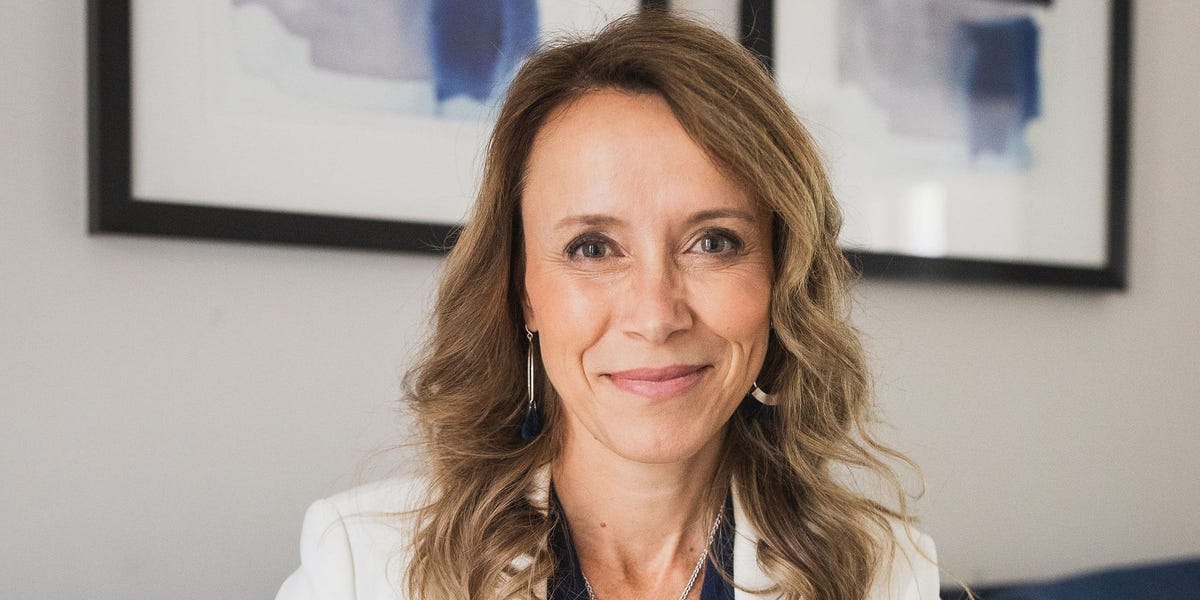
When I was a VP at my company, I was too afraid to speak up or tell my boss “no.”I reached burnout and collapsed during a meeting, forcing me to leave the office on a stretcher.Once I explored my childhood trauma in therapy, I was able to set boundaries at work.
Thanks for signing up!
Access your favorite topics in a personalized feed while you’re on the go.
download the app
“Teresa, you can plan the office party, right?”My stomach tightened, and I felt lightheaded at the question. I went through a mental checklist of everything I was asked to lead. I tried to repeat the boundary script I read in a Forbes article the previous day.Instead, these words come out of my mouth: “My workload is already full, is there any chance you can maybe find someone else to cover? If not, I will try my best to make a plan.”My boss stared blankly at me before telling me I should just plan the party.I had recently been promoted to VP of Human Resources. I was already stretched thin with developing new training programs, improving our hiring pipeline, and onboarding new hires. I was nearing burnout — and fast.I was too anxious in the office to set boundariesI knew what boundaries were, intellectually. Yet, on the few attempts that I tried to “set a boundary,” my body took over. I froze in terror, and my throat closed up.After being promoted to the executive suite, I became the only woman in the room. My heart raced whenever I contributed to a meeting. When I left the room, I obsessed over everything I said, questioning whether I sounded stupid or not. Soon, I lost my appetite, stopped sleeping through the night, and drastically lost weight.It all came to a head one day in a meeting. I remember my heart rate quickening. I felt my heart skip a beat. I tried to excuse myself, but after just two steps, my body swayed, and if it weren’t for a nearby chair, I would have fallen.”Teresa, should we call the ambulance?”
I blinked, and — in blurry, distortedness — I saw the faces of the CEO and CMO of my company staring at me. Soon, I was lying on a stretcher and being wheeled out to the lobby. The elevator doors opened and closed. The whole office was staring at me — jaws agape. I felt so small and mortified.I thought it was a heart problem, but at the hospital, they did a lot of tests that came out clear. The doctor diagnosed me with burnout and anxiety.I found the solution to my troubles when I started trauma therapyBefore all of this, I met one of my best friends for coffee at Starbucks. She was talking about her dad. At the end of the conversation, she said something that stuck with me: “I’m just curious, T. You never talk about your mom and dad. Why is that?”I evaded the topic of my childhood around friends and in the therapy room. Perhaps part of me hoped that journaling and the mindfulness work I was doing would be enough.But my friend’s question kept playing over in my brain.That’s when my psychologist guided me through Internal Family Systems (IFS) therapy, a practice where I embodied myself at different ages. I remember — during a session — embodying 9-year-old Teresa. My dad was screaming at me because my running shoes were not organized in a straight line at the door. As I described the scene to my therapist, he responded, “None of this was your fault.”Tears fell down my cheek. It felt like my therapist was talking directly to 9-year-old Teresa — not to 45-year-old Teresa.Even though both childhood trauma and burnout symptoms often overlap, the solution differs. Most traditional burnout recovery approaches overfocus on external solutions — like physical exercise or an adequate rest and sleep schedule. While these are healthy and self-care-promoting, for someone who has experienced childhood trauma, true relief comes from addressing your deeper needs, I learned.I implemented what I learned into my work lifeI realized that I was responding to male authority figures like I was a child, and that’s why I couldn’t tell my bosses “no,” and that led to my burnout.Having the awareness that this was happening changed everything. If I feel triggered at work, I quietly tell myself that freezing or complying helped younger Teresa survive scary events. And then I tell myself that things are different for older Teresa. I am not in physical danger, and the responses that served me when I was younger no longer serve me. Doing this means that I allow the fear or anxiety to pass through me. From here, I can assert my boundaries from a regulated state.This isn’t a one-and-done solution. I look at boundary work and trauma-based work as a lifelong practice. It’s a constant journey of understanding the patterns.Every time I manage to successfully navigate a difficult conversation that would have triggered me in the past, it reaffirms that I am, in fact, capable of asserting myself and setting boundaries — especially in the workplace.






